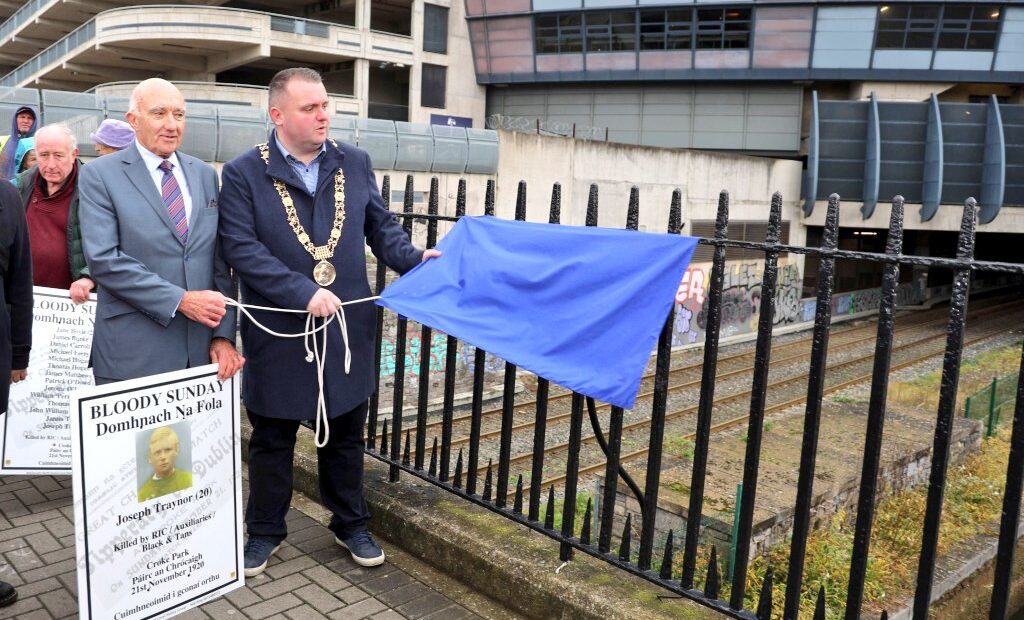“What’s in a name? That which we call a rose by any other name would smell as sweet.” The question posed in Juliet’s famous soliloquy comes to mind in the context of current controversies about re-naming places and institutions.
In particular, the decision by Dublin City Council to rename Clonliffe Bridge as “Bloody Sunday Bridge” raises the very reasonable question as to whether the name of an ancient geographical area of north Dublin should wither a little so that the appalling events at Croke Park on November 21st, 1920, should be memorialised tangibly by renaming a relatively insignificant bridge over the Royal Canal and railway tracks at Russell Street.
When the Council consulted local opinion on the renaming proposal, a majority of locals expressing a view (53%) were opposed to the idea. But the Council by a majority went ahead with the proposal.
The innocent victims of the 1921 reprisal murders are not named on the small white plaque attached to the railings of the bridge. The Lord Mayor, Daithí De Róiste, claimed that the renaming was something that the “people of Dublin” had been waiting for “for a long time”. In reality, the vast majority of the people of Dublin first learned of the renaming when it had already happened.
That event coincided with a discussion on the use of the term “Royal” in the title of post-independence Irish institutions. Should historical names given to present day Irish institutions now be changed so as to extinguish monarchical references. My very good friend Carmel Naughton raised this question at a debate held in the Royal Irish Academy hosted by ARINS: Analysing and Researching Ireland North and South.
As an Irish republican, I am very content to allow historical bodies to alter their names if that is what their members wish to do. If keeping the term Royal inhibits their image or activities, they should be free to drop it. But if they want to preserve their histories as reflected in their names, I believe strongly that they should be let do so without negative consequence in a tolerant, liberal republic established by the people of a country that was, as a matter of historical fact, a kingdom of sorts for the best part of two millennia.
Being republican doesn’t involve cancellation of our past. Historical titles are part of the shared heritage of the people of this island. As the Lord Mayor, Daithí De Róiste, stood on Bloody Sunday Bridge, he might have pondered why his position is entitled Lord Mayor in the first place, as opposed to a plain mayor. A charter from English Royalty?
On occasion, Dublin’s lord mayors wear the gold chain of office featuring King William of Orange. And while we are at it, the newly named bridge was keeping the Lord Mayor safe from immersion in the Royal Canal. Should that waterway be renamed to mark our independence as a republic?
The Royal Irish Academy, which hosted the ARINS event, had the effrontery to expel one of its learned historian members, my grandfather, Eoin Mac Néill, in the aftermath of his being sentenced to a life term in Dartmoor in 1916.
Six years later, he was Minister for Education in the independent Irish state. So, they had every reason to reconsider their loyal and condign expulsion – especially since there were mutterings about establishing a rival National Irish Academy. He was reinstated having served time in HMP Dartmoor, and accepted their volte-face with good grace. They made him their President in 1940.
More pertinently, we should remember that we are bound by international treaty since 1998 to respect and to seek to unite all the people of Ireland in “all the diversity of their identities and traditions”, in the words of Article 3 of Bunreacht na hÉireann, our republican constitution.
Can those who seek erasure of the term Royal from the names of our historical institutions not see that unionists in Northern Ireland are watching our debates? What future for Queens University in a united Ireland? Should the North follow suit in cancelling vestiges of their history?
Can we not acknowledge that these institutions simply date from a time when our history for most of our ancestors was one of subjection to English monarchy? Does the impulse to cancellation of that era really require renaming institutions of learning, golf clubs, hospitals, and waterways? Have we not the generosity of heart to allow us confidently to build our future and at the same time to preserve our history.
Must the Lion and Unicorn be torn down from the old parliament house on College Green and where else they appear on a few historic buildings?
Mary McAleese rightly emphasised bridge-building as a mission of her presidency. And the Boyne valley bridge was named in her honour to endorse that vitally important mission.
How does Bloody Sunday Bridge advance that mission, you might ask?
Photo: Dublin City Council

